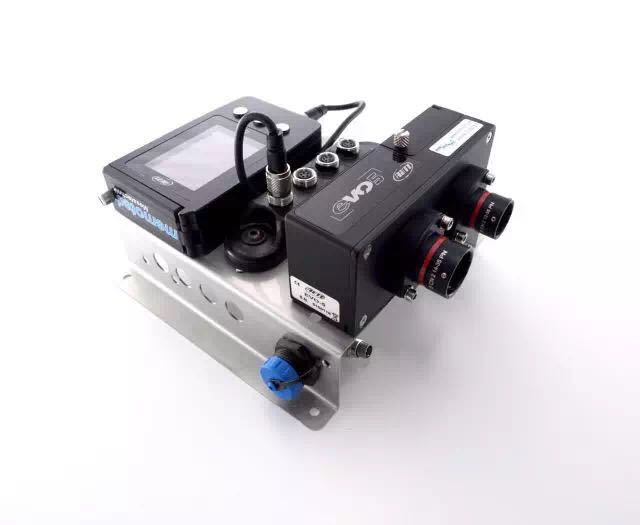The GT3 class covers cars of a variety of marques and different models. With anywhere between 6 cylinders to 12 cylinders, naturally aspirated engines and turbocharged engines, and a range of car sizes spanning everything from the petite BMW Z4 GT3 to the huge Bentley Continental GT3, all GT3 events world-wide have a set of BoP (Balance of Performance) mechanisms in place to balance the performance of each car. It is through BoP that such different cars have comparable performance and therefore able to produce competitive racing. The fact that BoP allows the race to have such a great visual impact is one of the main reasons why GT3 is still so successful since its inauguration 10 years ago.
Claude Roth, acting as the Technical Director of China GT, offering BoP technical support :
“The world-leading and highly experienced MEMOTEC race car service team is taking up the helm as the designated race service team for all SRO sponsored and FIA ratified GT races. The MEMOTEC team has provided scrutineering and BoP services in such top events as the Nurburgring 24 Hours, VLN GT Endurance Championship, 24 Hour Endurance Series, TCR International Series, ADAC GT Masters, as well as the increasingly popular Macau GT Cup (FIA GT World Cup). As in the aforementioned series, MEMOTEC will conduct data acquisition and analysis using the Aim data logger and set BOP standards for China GT.”
The cooperation between China GT and Aim this year has led to a new and specialised BoP created uniquely for China GT. This new BoP is better acclimated to China, and will ensure that the performances of the cars are better matched and the races are more closely fought.
The 2017 China GT official tests provided crucial data for BoP. Firstly, these tests ensure that the data logging systems operate normally, and allow Aim to amass data about each marque highlighting the differences. After each test, Aim collates and analyses all the data about each car. China GT has introduced new BoP standards compared with those of other races in Asia. A representative of each participating car manufacturer is invited to attend a technical committee to provide crucial details and feedback before the BoP can be finalised.
China GT uses a completely new BoP solution, unlike anything used by the SRO and FIA. Due to the large differences between the race tracks in China and Europe, the SRO and FIA have different BoP’s for different race tracks in Europe and America. China GT has taken the FIA BoP one step further to make races fairer and more suited to China’s climate and tracks.
The data logging system consists of two parts. The first part is an image collection system for recording the movement of the car on the tracks and the ways in which the driver manipulates the vehicle. The system can access the viewpoints from directly inside the car, providing crucial evidence when an incident is being investigated. The second part is a data logging system which is also used for collecting data about the engine and performance markers of the whole car, and is invaluable for implementing BoP. If a car wins the race or sets an excessively fast lap time, it is possible to analyse performance data about the car and modify the engine power, ride height (which can be used to adjust down force) and the weight of the car. Single lap times are an important factor when considering BoP. However, Aim can also track the performance of cars over long distances, under extreme temperatures, different air pressures and levels of tyre degradation to determine the most suitable BoP.
The condition of the driver is not a factor taken into account when determining the BoP, and Aim can only carry out BoP on the vehicle itself. As such, China GT has introduced a system for separately rating Pro drivers and Am drivers. The stoppage time required for each driver and driver combinations will be implemented across these different ratings, which makes the races more intense.
Based on the initial homologation forms submitted by the teams, Aim has already completed the first BoP plan for the Beijing Goldenport Int’l Circuit and it has been implemented during the official tests. Next, during the first race weekend, Aim will collect data for fine-tuning to make the BoP plan fairer. The BoP will also be based on the state of each race track, with minor changes being made to the BoP during each race weekend.
If the drivers and teams deliberately have slow lap times to try and massage the data (e.g., braking early or taking non-standard racing lines), Aim can clearly see this on their data logger. The BoP data logger cannot be tricked, even when drivers try to deliberately modify their lap times.
For cars that did not participate in the official tests, Aim will find a balanced plan from a basic BoP table, and will make adjustments according to the performance and lap time feedback about cars of other marques during the tests.
The main challenge is how to balance turbocharged and naturally aspirated engines. Aim uses the same BoP method as other racing events, i.e. by controlling the turbo pressure at each revolution interval to achieve a performance output similar to that of a naturally aspirated engine. The data logging system comprises two independent lambda sensors and two air intake pressure sensors, which ensures the integrity and accuracy of the data. This also means that it is easy to detect whether teams are trying to bypass the sensors by comparing the pressure values before and after the intake manifold. At the same time, it is also easy to tell whether naturally aspirated cars have any additional air inlets apart from the restrictor.









